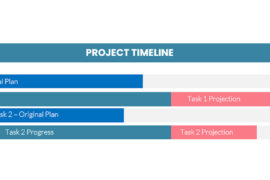It’s the latest, hottest topic in the project management workspace – “project portfolio management”. At one time, what we meant by portfolio management was simply the management of multiple projects at one time. The old term “multi-project” management referred to doing critical path and resource analysis and reporting of multiple projects grouped together. Nowadays, the term often has an expanded meaning to include the authorization process of the projects themselves, a topic which is particularly interesting not only to me but also to executives everywhere.
When you think about all the statistics we’ve quoted in these very pages about projects that fail, I’ve long held that half the battle in improving these statistics is in affecting what projects were chosen in the first place.
If you’re a project manager, you might think that you have no influence over choosing projects; that they’re often handed to you with unworkable conditions as a fait accompli. Nothing could be further from the truth. Implementing a project approval process or “gated” approvals is the kernel of project portfolio management and it’s almost always initiated by the project office. We don’t need to implement rocket science here. Let’s start with the basics.
First, let’s establish an approval flow for new projects. The first phase or “gate” could be the authorization to create a detailed plan. This makes some sense as creating a detailed plan takes effort and/or money and expending effort is something that is almost always approved by someone. The creation of a simple form whether on-line or on paper in which some basic criteria are established such as expected return on investment and alignment with business objectives.
Once the detailed plan is created, it might have to be attached to a form with identified risks, bottom-up estimate of schedule, effort and costs.
The combination would provide a baseline from which to measure if the project passes this approval. Being approved through this second “gate might allow the project to begin execution. Approval might include a calculation of return on investment based on the updated schedule and costs.
Regular reviews of the project status could be implemented in the same fashion, allowing the project to be ongoingly evaluated against a dynamic economy and changing business conditions as the project progresses.
A simple gated approval process can make a tremendous difference in a number of different ways. First of all, just going through the process identifies risks and assumptions that might otherwise be ignored. Management might have an assumption that a new product could be developed within a certain amount of time and for a certain amount of money. The ground-up estimate might show that the product can’t make it to market in the time required to pay back the results expected. Another common assumption is that key skilled personnel will be available when we need them but in the high-tech world there are often a very small number personnel that are so key that they can form a bottleneck to new project schedules. Doing a skill assessment in our baseline and comparing it to existing projects will likely reveal the problem.
It’s no wonder that project portfolio management is such a hot button with management in this tighter, less forgiving economy. The good news is that starting portfolio management by implementing a very simple approval process is possible with minimal effort in almost every organization.





